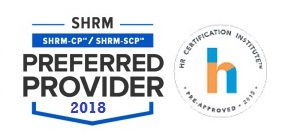Cognitive and Physical Essential Function Job Analysis
Friday, June 15th, 9:00 a.m. to 4:30 p.m.
Hosted by Industrial Rehabilitation & Evaluation Services, LLC
770 West Hampden Avenue, Suite 300
Denver, Colorado
Contact Hours: 6.0
Tuition: $275; Early Bird Tuition Expires Monday, June 4th: $225
The growing technology-dependence and complexity of the workplace have resulted in a far greater need for cognitive skill at all levels of employment. Unfortunately, cognitive skill can be impacted by some factors ranging from an accident (traumatic brain injury) to addiction, to simple aging. Insurers, employers, and legal counsel across the United States are coming face-to-face with the need for more comprehensive essential function job analyses. Developed jointly by Dr. Leonard Matheson and Roy Matheson, the intent of this learning experience is to train you to include the analysis of both the cognitive and physical demands of a target job in your essential job analysis work product.
The Importance of a Comprehensive Job Analysis
As compared to work evaluation practices before ADA Title I, the first step in rendering a workability opinion is now a thorough identification of the essential functions of the target job. (Keep in mind that today the essential functions of a job are rarely lifting, carrying, standing, dexterity, etc.) Once the identification of the essential functions is complete, step two, analysis and measurement of the cognitive and physical demands supporting the essential functions, can be conducted.
The third step in this process is to render an opinion of the individual’s ability to safely and effectively execute the cognitive and physical demands of the job with or without reasonable accommodation. This opinion must be the result of a sensitive comparison of the demands of the position and the worker’s accommodated ability. A negative opinion rendered without the support of accurately measured cognitive job demands may not survive scrutiny.
What You Will Learn
You will learn to distinguish the essential functions of a job from the cognitive or physical demands of job tasks. While job analyses for State workers’ compensation systems and the Social Security system use the Physical Demand Characteristics of Work system (Sedentary, Light, Medium, Heavy, or Very Heavy levels of the Occasional, Frequent, or Constant frequency categories), the federal ADA Title I system requires a more precise method. Work evaluators, physicians, and insurers now face the need for analyses that provide both types of task description and measurement.
Course Goals
Students will learn:
- How to select which cognitive demands to analyze
- How to write compliant essential function task statements
- How to approach measurement of physical demands tied to essential functions
- How to establish valid job-relatedness of work tasks and essential function statements
- How to conduct the pre-analysis interview
- How to use OSHA 300 log data, loss-run reports, and requests for reasonable accommodation to select jobs for analysis
- How to update the structure of your report to produce a contemporary work product
These skills will contribute to your competency with the legal and professional boundaries of the new essential function job analysis requirements.
Course Materials
Each participant in this training program will receive a copy of Roy Matheson’s “The Americans with Disabilities Act – Title I Compendium” which includes:
- Selected sections of ADA Title I
- Landmark federal court employment discrimination opinions
- EEOC press releases announcing the settlement of employment discrimination charges
- Julie Brandfield’s Undue Hardship: Title I of the Americans with Disabilities Act
- A sample of a cognitive and physical essential function job analysis
This workshop supports your learning process by presenting real-life ADA Title I scenarios. At the beginning of the workshop, we will select one or two of the examples seen below to follow through the day. We encourage you to submit your interesting or difficult experiences, too. You may email materials before the event to info@mathesonra.com or call us at 603-358-6633.
Qualified Individual #1: Long-Term Propane Truck Driver
This 32 years old employee with no accident history is working his route when the truck goes into a ditch on a county road (because of loose gravel) and flips over. The unconscious driver was extracted from the vehicle with head and multiple orthopedic injuries. At the time of injury, the driver lives in a rural area, is a community volunteer, is a high school graduate with eight years of satisfactory job performance with this company, acts as a trainer for new drivers and is happily married with two children.
Driver recovers well physically from arm and leg fractures (and returns to work) but has increasing problems with short-term memory loss, headaches, emotional lability, weight gain, and lack of patience. He is getting lost on familiar routes and cannot do tasks requiring three-step processing. Customers complain that about the driver’s crabbiness, lack of customer service ethic, inaccurate invoicing, and being late. His employer is also noting forgetfulness with equipment maintenance and submitting reports.
The marriage is suffering, and volunteer work is no longer part of his after-work life. While rural medical care is available, post-concussive syndrome or another brain injury may not have been well addressed.
(Scenario provided by a senior insurance case manager.)
Qualified Individual #2: Experienced Custodian
A seasoned employee (age 30) falls from a 6-foot ladder while changing light bulbs, experiencing broken wrist, strained back, and concussion. Wrist and back injuries heal, and custodian returns to transitional work during his recovery time. However, concussive symptoms remain and appear to get worse. Issues include forgetfulness, fatigue, headaches, migraines with light and sound sensitivities, slower eye movements, and impatience with staff. He cannot remember room locations or match work slip assignments correctly, forgets safety and cleaning standards associated with work, and is often late to work.
(Scenario provided by a senior insurance case manager.)
Qualified Individual #3: Nurse, General Duty
A nurse, age 32 with chronic lower back pain reinjures back during team transfer of 400-pound, immobile patient. Returns to work as scheduled, assigned to “light duty” to coincide with six weeks of physical therapy. Light duty to include monitoring of telemetry units. Twenty-eight days post injury the nurse presents for examination by a company physician. The physician orders no lifting over 20 pounds, no repeated squatting or bending, and no pushing/pulling of patients or equipment.
A functional capacity evaluation also ordered. The test vendor advertises the evaluation as including:
“An objective Functional Capacity Evaluation that can be used to determine the functional abilities of an injured employee and their ability to safely return to their occupational duties. We will perform a comparison of the individual’s abilities as demonstrated during testing against the essential demands of their occupation. The report will identify whether the individual meets the essential demands of the position, and if they do not, the report will identify at what level they may safely perform based on their results.” The description of the evaluation also states, “Data from each test is collected using our state of the art motion capture systems.” The FCE reports states the following:
FCE Summary of Ability to Complete Tasks
The examinee demonstrated a consistent effort during 4 of 6 components of this evaluation. She demonstrated 2 of 6 indicators for self-limited performance during grip strength testing and a high coefficient of variation in 12 of 15 whole body strength tasks with three positive horizontal displacement values. While her overall performance is an accurate portrayal of her physical abilities, her significant self-limited performance during whole body strength testing is not.
Job Duty Recommendations
Based on the examinee’s performance, she meets the essential postural demands of her occupation. Based on her significantly self-limited performance during whole body strength testing, she does not meet the essential physical demands of her occupation.
Recommended Alterations to Job Demands
Based on the examinee’s significantly self-limiting performance during whole body strength testing, she does not meet the essential physical demands of her occupation. However, her significantly self-limited performance minimally meets the demands of light work as defined by the Dictionary of Occupational Titles (20 pounds occasional, 10 pounds frequent, negligible constant).
(This scenario was provided by an employee considering a charge of discrimination. A formal charge of employment discrimination was not filed as the employer withdrew the functional capacity evaluation report after consultation with an ADA Coordinator with an extensive background in work evaluation under ADA Title I. The employee has returned to work in her original position.)

Roy Matheson, ADAC has a 30-year background in occupational rehabilitation and ergonomic evaluation training and professional certification. His initial exposure to employment testing began at the Employment and Rehabilitation Institute of California (ERIC) in 1983. The rehabilitation and work evaluation philosophies at the heart of the medical examination section of ADA Title I originated at ERIC under its founder, Dr. Leonard Matheson.
Work tolerance screening, work capacity evaluation (now known as ‘functional capacity evaluation’), and work hardening were introduced as new rehabilitation services at ERIC clinic. Roy Matheson’s contribution to the growth of employment testing under the Matheson philosophy was the development of training programs, software, and equipment used by therapists around the globe.
In 2012, the effect of federal court cases involving employment testing served as a call to action for Roy Matheson. In the ensuing years, he transitioned to what is now Reasonable Accommodation, LLC, and reasonable accommodation.com. His practice focuses on advising and training employers, government agencies, therapists, and legal counsel of the mechanics of medical examination and reasonable accommodation under ADA Title I.
Roy has presented as a keynote speaker, panelist, trainer, or workshop instructor at more than 400 public and private educational events, management training programs, and national conferences. His audience includes managers and staff of federal, state, county, and municipal government entities as well as the full spectrum of corporate entities across the United States, Canada, and six other countries. Roy’s body of work includes hundreds of online webinars and blogs related to Title I of the ADA and the Rehabilitation Act.
His consulting and guidance assignments address legal compliance issues raised under Title I of the Americans with Disabilities Act and Section 501 of the Rehabilitation Act. These issues include aspects of employment testing, essential function job analysis, and reasonable accommodation program start-up and management. Roy sees himself as a trusted adviser in demanding situations requiring clear, well-thought-out guidance within the environment of employment and disability-related civil rights law.





